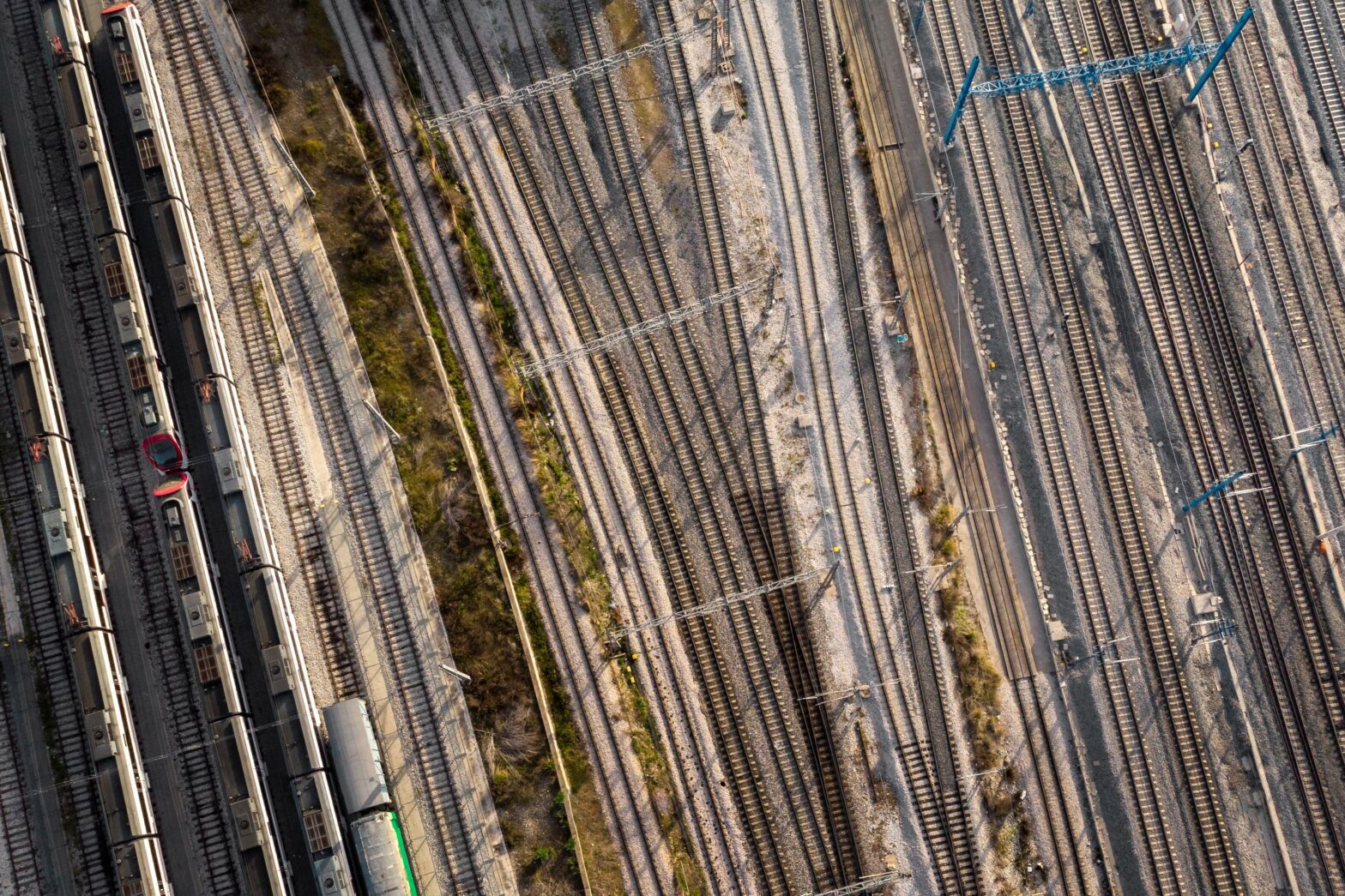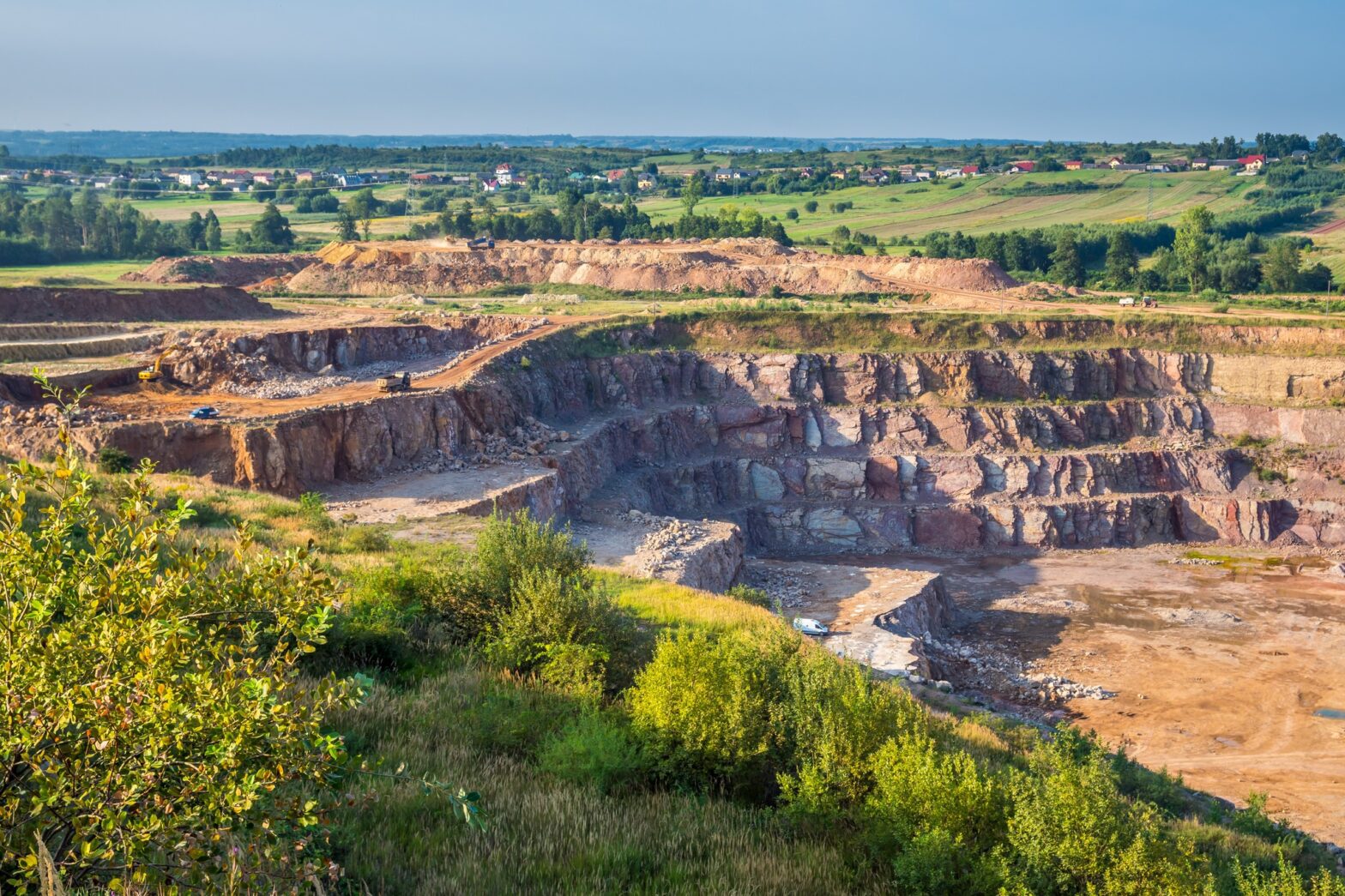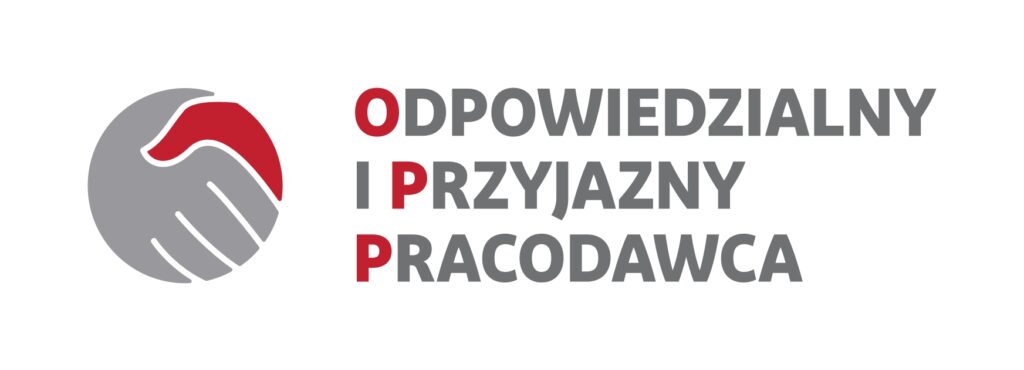The development of intermodal transport has become a fact. Poland must use its potential in this area and start planning an even distribution of terminals, and thus establishing new routes that already link the current rail transport corridors.
In recent years, there has been a constant upward trend of intermodal transport in Poland, but also throughout Europe. The greater opportunities in the development of this branch of the economy become, the more one can count on real support for low-emission transport on the part of the European Union. This is undoubtedly the railway, which is characterized by 3 times lower CO2 emissions than road transport and 8 times lower emissions than air transport. The assumptions of the European Green Deal, adopted by the European Commission, state that their main purpose is to reduce carbon dioxide emissions leading to the climate neutrality of our continent in 2050. While road or air transport are looking for solutions that allow you to reduce their carbon footprint, the railway is already responsible for 0.4 percent of CO2 emissions in Europe. In addition, the European Union clearly indicates a specific parameter – 75 percent of land transport of goods should take place on railroads.
Rail transport must exploit its comparative advantage, among others in the field of transporting goods. Considering the geopolitical location of Poland, the aspirations of our country to be one of the main transshipment hubs on the east-west and north-south axis are natural, therefore it is important to invest in modernization and expansion of the railway network in the country, as well as to create intermodal terminals, enabling reloading of goods. In Poland, as at the beginning of 2020, there were 39 intermodal terminals, which at that time placed our country in the 8th position in Europe. There are 177 facilities in Germany, 84 in France, and e.g. 15 in Hungary. This indicator should not be fully satisfactory for Poland, which in terms of area is only 14 percent smaller than our western neighbour where the number of terminals is almost 4.5 times higher.
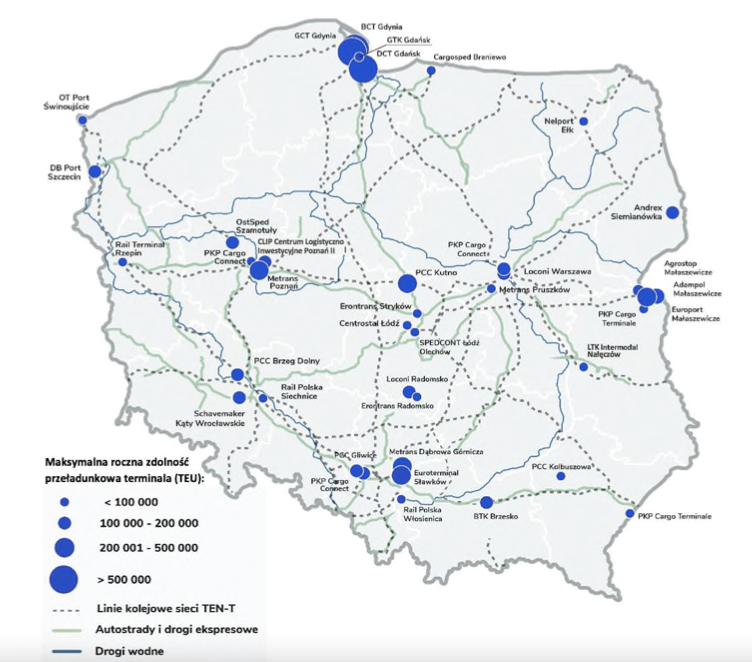

As indicated by the Centre for EU Transport Projects in the publication “Directions for the development of intermodal transport until 2030 with a perspective until 2040” not only the number of terminals matters, but also their distribution. In Poland, terminals are distributed irregularly, and some are located in similar locations, including Pomorskie and Wielkopolskie Provinces, and there are no such facilities, e.g. in the Świętokrzyskie Province, which has the appropriate infrastructure facilities, e.g. in Skarżysko-Kamienna, a town lying at the intersection of railroads of lines no. 8 and 25, connecting Warsaw with Kraków and Łódź Kaliska with Dębica. These lines are part of a comprehensive trans-European Transport Network (TEN-T). In addition, line no. 8 is one of the sections of the new freight rail transport corridor RFC-11 [Rail Freight Corridors] (Amber) linking south-eastern Poland with Slovakia, Slovenia and Hungary. As you can see on the map below, the eastern connection of this corridor runs to Budapest by an interesting road through Muszyna, Koszyce and Miszkolc.
As indicated by the Railway Transport Office in the report for 2020 on the intermodal transport in Poland, the interest and volume of transit intermodal transport to Germany increases. The data also indicates the growing role of transport to southern neighbours: “Data on transit implemented by Poland from Małaszewicz to Zebrzydowice indicates that between these stations, as in the report from Małaszewicz to Rzepin, there were large increases often of over 100 percent. The implementation of the east -south routes gives also the possibilities of using the connection network not only to the Czech Republic, but also Hungary or even Italy.”
This corridor creates real opportunities for further development of intermodal rail transport not only in the region, but also in Poland, provided that they build the terminal in the Świętokrzyskie Province, therefore one should think about using the location of the appropriate transshipment infrastructure in this province. However, its full development would be possible after the creation of the southern connection of the Rail Baltica railway corridor, connecting Finland, Estonia, Latvia, Lithuania, Poland and Germany.
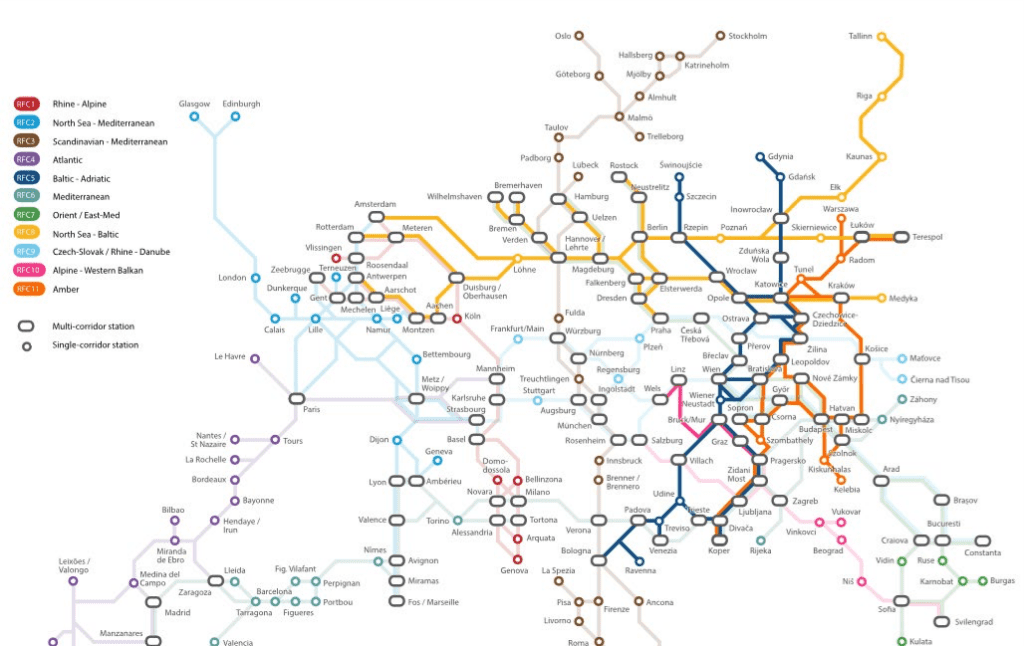

The extension of the Rail Baltica trail with a southern connection would be a gate to transport intermodal goods from the south of Europe, with a view to the great importance of a terminal located in Hungary in Budapest, in which goods from the Balkan countries are concentrated, including the South Trans of the New Silk Road. It would also be a chance to strengthen economic relations with the countries of Vyzieschrad and Three Seas Initiative, such as Slovakia, Hungary, Romania or Bulgaria as well as countries further on this route with which Poland has the history of good relations, such as Turkey, Georgia, Azerbaijan or Kazakhstan (with crossing through the Caspian Sea). Such a route avoids politically unstable countries like Belarus, which also has a destabilizing impact on the entire region. This corridor would ensure the stability of supplies and an alternative to existing routes. It is therefore necessary to consider joining the Warsaw – Budapest section with a terminal in the Świętokrzyskie Province. This investment would become significant as long as it would strengthen the Three Seas Initiative by extending the transport network of goods in Europe by creating new intermodal terminals, which should be supplied by railway routes connecting key trade corridors, e.g. Rail Baltica, RFC-11 (Amber). It is worth mentioning that on November 16 this year the call for applications from the transport sector began under the “The Connecting Europe Facility” Instrument 2021-2027 (CEF2), which provides a budget of EUR 7.05 billion. Infrastructure managers and managers of rail-road terminals and other multimodal logistics platforms can apply for funding. As indicated by the Railway Transport Office in the announcement about the possibility of submitting applications “for the first time, intermodal terminals may apply for such a wide funding, because one of the goals of the CEF instrument is to increase the share of railways in total transport. The level of EU support in the overall pool has been determined at a maximum of 30 percent of total eligible costs, but in the case of cross-border projects supporting rail interoperability, new technologies and innovations this value can be raised to 50 percent. Documentation projects can also count on support of up to 50 percent.” This is a real opportunity for Poland to create new terminals evenly, also leading to the design and expansion of corridors in the intermodal transport segment. Therefore, you should no longer ask questions “whether” Poland will be able to strengthen position on the international arena in the field of transporting goods, only “what and where” railway lines should be added to fully use the geographical potential of our country, which is located at the intersection of the north-south and east-west corridors. In this context, one should consider the rationale of investment in railway lines connecting the Świętokrzyskie Province, Skarżysko-Kamienna and Kielce with the eastern connection of RFC-11, going from Warsaw to Budapest through Muszyna and Koszyce.
The construction of new dry reloading ports or the modernization of the existing ones is completely justified, and a good example is the port in Małaszewicze, which connects Western Europe with Asia and aspires to be a key point on the route of the New Silk Road. In August this year the terminal served a record number of trains, i.e. 18 trains went through it for the first time in one day. The terminal in Małaszewicz achieved its maximum capacity after one year after its opening. In addition, the Terespol-Borning border crossing in 2020 generated PLN 5.5 billion in duties and taxes on goods. 20 percent of fiscal receivables go to the Polish budget as a country of transshipment after entering the EU, and 80 percent to the budget of the target countries in the EU. These amounts can increase with an increasing number of transported goods.
Being aware of the location of our country and its all values in the field of trade exchange, it is worth pointing out that the goods transport by road still dominates at a distance of over 300 km. The Supreme Audit Office in its report published in April 2020 indicates that in Poland as much as 75 percent of goods at this distance are transported with trucks, while the European average is 41 percent. Poland, in the perspective of the next less than 30 years, fulfilling the assumptions of the European Green Deal, should develop a network of intermodal rail transport, which will allow a significant relief of roads and the carbon footprint reduction.
In addition, the prevailing pandemic showed which means of transport are most sensitive to economic fluctuations. The Railway Transport Office in its report emphasizes the continuous increase in intermodal transport by rail despite the ongoing pandemic. Comparing the first half of 2020 with the first half of 2021, the cargo weight increased by 2 million tonnes and the performance by 0.3 billion tonne-kilometres. Indicators show that this is not a temporary “fashion”, but a trend that increases the importance of intermodal transport. Poland must take advantage of its opportunity and revise plans for the development of freight routes, taking into account the even distribution of intermodal terminals, and thus setting new railway routes, such as Warsaw through Skarżysko-Kamienna to Budapest, thus opening new directions and increasing the tonnage of the transported goods by rail.
